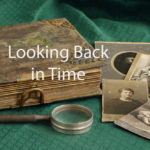
by Phillip G. Goff, GGFA Director of Genetic Genealogy
In the United States, it can be a challenge to find a precise date of birth for 19th century ancestors. The 1900 U. S. Federal census marked the first time that the month and year of birth is available nationwide. But for ancestors who did not live to 1900, civil and church records and tombstones are the go-to source for birth dates. But these are not always available. For much of the 1800s, many towns, counties and states did not mandate the keeping of vital records. Church records, when they were kept, are generally not readily accessible today. Tombstones can be a good source for birth dates, but sometimes only include date of death and many graves are unmarked. When these sources fail, birth dates can sometimes appear in unexpected places.
Websites like Ancestry, MyHeritage and FamilySearch have made original records readily accessible through online indexing. These sites also make it easy to add these sources to a family tree with the click of a mouse. Checking the original image of the source document will sometimes provide valuable, but unexpected information, such as precise birth dates. The Roane Co., WV discovery of precise birth dates for citizens dating back to 1783 is one such example.
Phillip Goff is the co-author, along with Roy L. Lockhart, of The Four Goff Brothers of Western Virginia. Since 2004, he has run the Goff/Gough Surname DNA Study, which today has about 400 participants.
